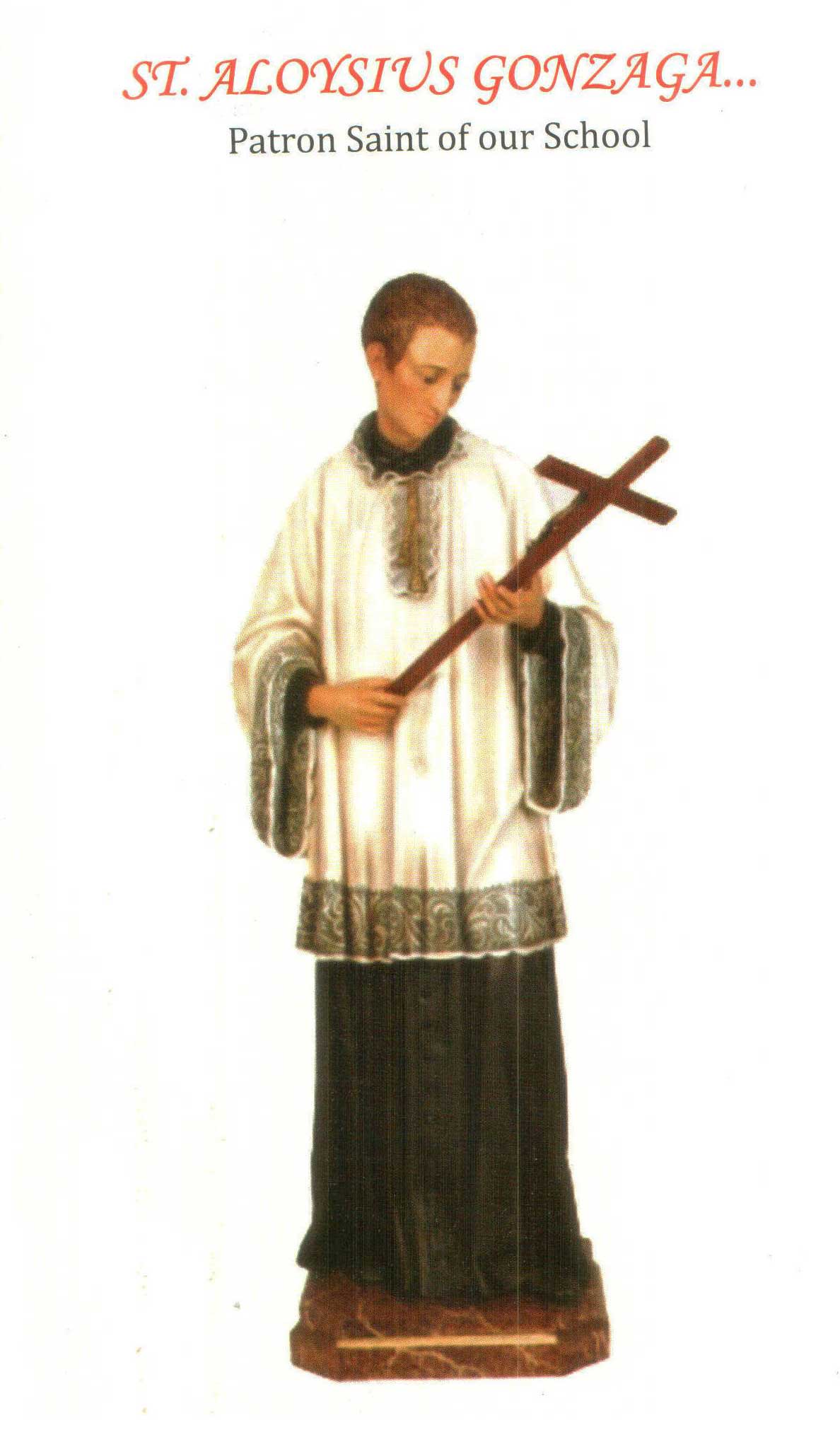OUR PATRON SAINT
Introduction to the Life of St. Aloysius Gonzaga:
St. Aloysius Gonzaga was born in Northern Italy, between Brescia and Mantova. His father was a famous condottiere, a mercenary soldier. Saint Aloysius received military training, but his father also provided him with an excellent classical education, sending him and his brother Ridolfo to Florence to study while serving at the court of Francesco I de Medici.
The Life of St. Aloysius Gonzaga:
In Florence, Saint Aloysius became ill with a kidney disease, and, during his recovery, he devoted himself to prayer and the study of the lives of the saints. At the age of 12, he returned to his father’s castle, where he met the great Saint and Cardinal Charles Borromeo. Aloysius had not yet received his First Communion, so the cardinal administered it to him. Shortly thereafter, Saint Aloysius conceived of the idea of joining the Jesuits and becoming a missionary.
His father was adamantly opposed to the idea, both because he wanted his son to follow in his footsteps as a condottiere, and because, by becoming a Jesuit, Aloysius would give up all rights to inheritance. When it became clear that the boy was intent on being a priest, his family tried to convince him to become a secular priest and, later, a bishop, so that he could receive his inheritance. Saint Aloysius, however, was not to be swayed, and his father finally relented. At the age of 17, he was accepted into the Jesuit novitiate in Rome; at the age of 19, he took vows of chastity poverty and obedience. While he was ordained a deacon at the age of 20, he never became a priest.
In 1590, Saint Aloysius, suffering from his kidney problems and other ailments, received a vision of the Archangel Gabriel, who told him that he would die within a year. When a plague broke out in Rome in 1591, Saint Aloysius volunteered to work with plague victims, and he contracted the disease in March. He received the Sacrament of the Anointing of the Sick and recovered, but, in another vision, he was told that he would die on June 21, the octave day of the Feast of Corpus Christ! that year. His confessor, St. Robert Cardinal Bellarmine, administered Last Rites, and Saint Aloysius died shortly before midnight.
Pious legend has it that Saint Aloysius’s first words were the Holy Names of Jesus and Mary, and his last word was the Holy Name of Jesus. Aloysius was buried in the Church of the Most Holy Annunciation, which later became the Church of Saint Ignatius of Loyola in Rome. His name was changed to Robert before his death, in honor of his confessor. Many people considered him to be a saint soon after his death, and his mortal remains were moved to the Sant’ Ignazio church in Rome, where they now rest in an urn of lapis lazuli in the Lancelot Chapel. His head was later translated to the basilica bearing his name in Castiglione delle Stiviere. He was beatified only fourteen years after his death by Pope Paul V, on October 19,1605. On December 31,1726, he was canonized together with another Jesuit novice, Stanislaus Kostka, by Pope Benedict Xlll.
Saint Aloysius’feast day is celebrated on June21, the date of his death.
The life of the Saint, relatively so short, — not really a life, properly speaking, but merely a preparation for life — is a model full of efficacy and significance for the young, and on this account Aloysius has been chosen as their patron.
The claim of St.Aloysius to the title of Patron of Youth rests upon two grounds. The first reason is, that the Church herself has appointed him the patron of youth. The patronage of youth exactly suited his own inclination and his heart’s desire, for he had a special love for the young.
In 1729 Pope Benedict the XIII declared Aloysius to be the patron saint of young students. In 1926 he was named patron of all Christian youth by Pope Pius XI.

